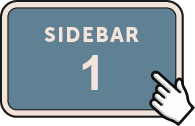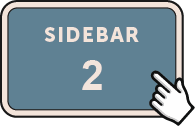Show Navigation Menu
Section Two : Becoming a Researcher/Scholar
Chapter 8: Reviewing and Improving Writing
Introduction | Proofreading and Editing | Using a Peer Reviewer | Using a Professional Editor |
Hide Navigation Menu
Home Page
Section 2 Becoming a Researcher/Scholar / Chapter 8 Reviewing and Improving Writing
2. Proofreading and Editing
Proofreading and editing influence content understanding and the relationship of that content to the learner’s audience. By allowing the audience to better understand and relate to the content, learners should consider the proofreading and editing process to be a primary, ongoing, and necessary component to add value to their writing, and to be the underlying method of transferring the intended meaning to the audience. For example, when using proofreading and editing to sharpen content and to correct grammatical and mechanical errors, learners can visualize a thick line spiraling and twisting into a clear, thin unambiguous line. The top portion of the line is blurry and wider than necessary indicating that first drafts are often unfocused. The original draft often includes many short phrases that can be revised or even eliminated allowing the piece to maintain the meaning with enhanced clarity. The first drafts also may include many mechanical and grammatical errors because the learner’s attention has been focused on getting the words on paper. The final point at the bottom of the spiral is the revised, finished document and is the precise, intended content—the goal of proofreading and editing. Ormond (2012) underscored the intent to be precise by suggesting that learners should choose their words carefully to communicate the exact meaning, which produces clear and effective sentences.
Without proper proofreading and editing, the content could appear meaningless, unfocused, and irrelevant, leaving the audience with little or no connection to the content on any level. The outcome of the proofreading and editing process for the audience should be cohesive, logical, and understandable coverage of the intended topic. A continual eye toward three issues—cohesiveness, logic, and understanding—could provide an avenue to influence the audience in a monumental manner.
In the past, proofreading and editing were considered to be “checking for errors of grammar, punctuation, spelling, citations, word choice” in order to locate formatting and style, mechanical and language usage issues, and typographical errors (Chromik, 2002, p. 1). According to Davis and McGrail (2009), proofreading and editing have grown into an intense process of not only checking for Chromik’s noted errors, but also of identifying with the audience through “literacy that includes writing, [and] higher order thinking,” and knowing your audience in an effort to make a firm connection and to have content fully understood (p. 523). To summarize, editing has also become a content revision task and requires the draft to be reviewed with formatting, mechanical, audience, and content goals in mind. Doing all of this is a challenge and requires a strategy, skill, and much forethought and planning. An effective plan that includes proofreading from the beginning of the writing project can add much to the understanding of the piece.
Editing or self-editing often refers to improving one's own writing through a series of revisions, enhancements, and the elimination of unnecessary phrases and wording, as well as the routine and cautious use of spell-checker software in order to produce a clear, concise paper or proposal. Simply put, self-editing includes proofreading based on decisions and recommendations reflecting the quality of the project as a whole and questions “whether the work constitutes an original and worthwhile contribution to academic and professional literature i.e., editing for content and not just style” (Maguire, 2008, para. 9).
Proofreading, editing, and content revisions are on-going processes and require skills that are often neither learned nor encouraged as necessary skills in early writing classes. Learners who find that they are lacking in proofreading, editing skills, and overall writing skills should begin immediately to seek resources and develop the necessary knowledge and skills for writing effectively. Learners who begin adding to their proofreading and editing skills early, before such skills are needed, will benefit later by saving time while producing effective and focused writing.
Numerous websites refer to the most common writing errors, but simply selecting and using only one of these lists may not be sufficient for every learner. Reviewing and individualizing these suggestions to create a checklist of specific common writing errors is key to improving a learner’s own writing. This provides the learner with an opportunity to list only those errors that align with the learner’s particular writing and formatting deficits, and then work on those items directly while proofreading and editing. Developing proofreading and editing skills are beneficial and provide learners with the opportunity to become proficient at editing their own work as they develop into professional researchers.
GCU provides numerous resources to assist in building writing and editing skills. One of the many resources available to all GCU learners is the Student Success Center (SSC). Learners may navigate to the SSC from the LoudCloud classroom or by accessing the website directly. The SSC provides an excellent foundation for self-directed academic help, and contains links to many academic policies and tools which address writing and editing skills. Three sections in the SSC are particularly helpful to learners. The first section being the SSC Writing Center and containing style guides and templates for APA 6th edition papers, as well as links to helpful writing websites. Next the SSC Grammar Success Booster is a self-directed mini-course containing a fully implemented syllabus, outcomes, video and text instruction, and quizzes to check for understanding and skill comprehension. This tool focuses on building competency in grammar. Finally, the Writing Process media piece, while foundational in nature, can be a helpful tool for solidifying the basic overall writing process.
The Center for Learning and Advancement (CLA) is another resource in support of success which is available to GCU learners. The CLA provides additional tools such as peer mentoring, and allows learners to book appointments with tutors for one-on-one support, if assistance is necessary beyond the learner self-directed resources.
The process of proofreading and editing should begin as soon as the writing begins and continue through the final draft. Learners should develop essential proofreading and editing skills well before writing begins. Carefully studying each section within the APA manual, focusing on proper formatting, as well as any instructions for assignments or available resources and rubrics, and reviewing specific templates and guidelines beforehand will provide a foundation for both formatting and good writing. As has been mentioned several times, throughout this text, GCU recommends that learners purchase a hard copy of the APA manual to have on hand while writing papers for assignments and their dissertation.
Learners may find that incorporating the proofreading, editing, and revision processes into their writing on a daily basis includes many daunting tasks, such as setting a daily schedule for these activities, prioritizing activities for effectiveness, and self-regulating and evaluating progress. When this happens, learners should consider whether it is advantageous to include a peer or two to review the content to enhance the content for better understanding. However, this consideration should not dissuade careful attention to grammar, format, wording, or overall effective writing throughout the writing process. Learners who focus on proofreading and editing for appropriate understanding will see the benefits through time saved later in the final drafts. Developing scholarly writing skills early in the program is critical to successfully writing a high quality scholarly dissertation manuscript that is written at the appropriate level for publication.

The outcome of the proofreading and editing process for the audience should be cohesive, logical, and understandable coverage of the intended topic.

Sidebar 1: Writing Effectively,Time Savers: Six Questions for Self Proof-Revising

Sidebar 2: Editing Skills,Developing an Editing Plan
